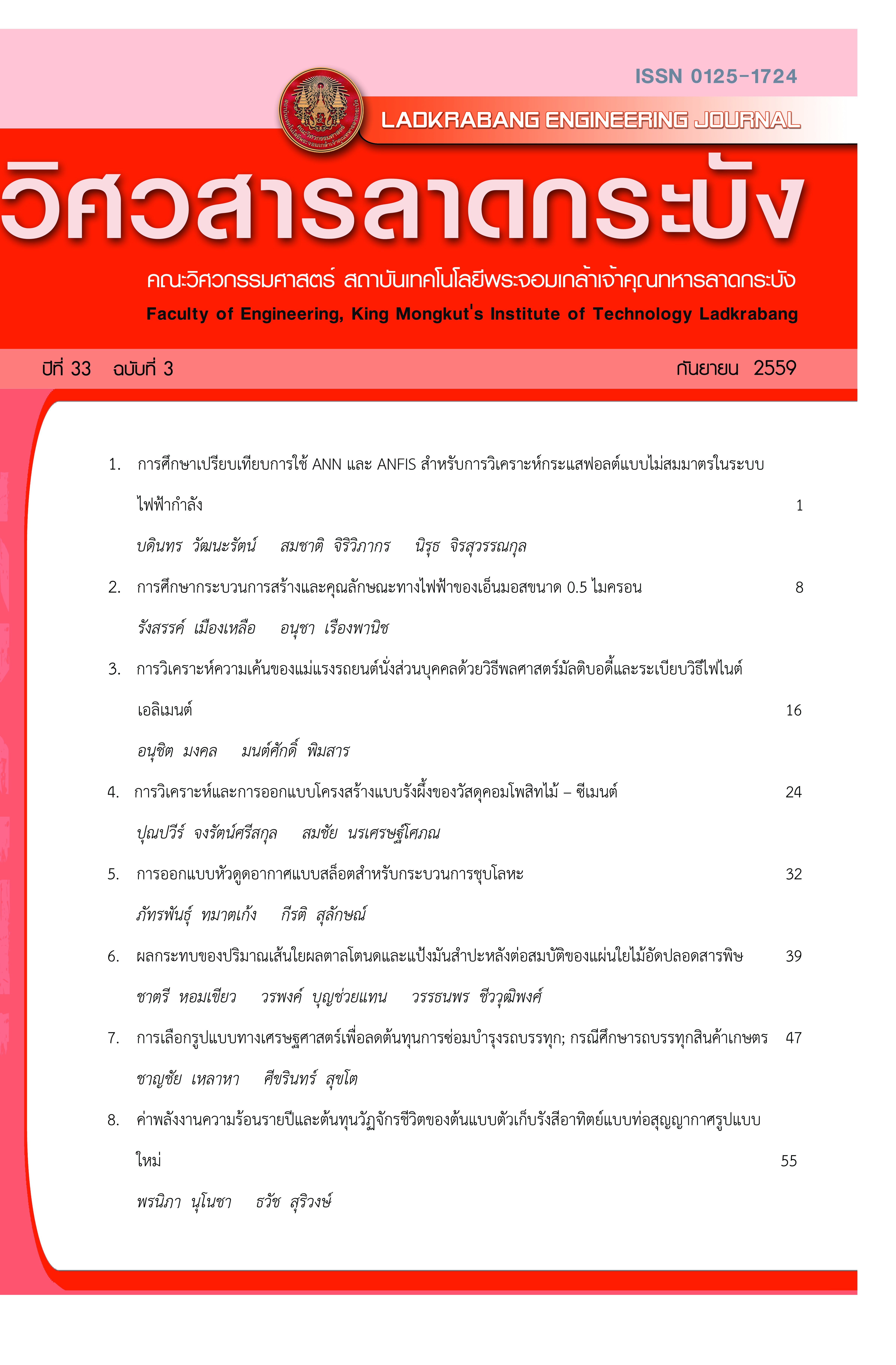การศึกษากระบวนการสร้างและคุณลักษณะทางไฟฟ้าของเอ็นมอสขนาด 0.5 ไมครอน
Keywords:
MOSFET, CMOS, SPICEAbstract
This paper presents a study of the fabrication process and electrical characteristics of 0.5 mm NMOS transistor, n-type Poly silicon gate. There are 3 steps for this study. The first step is fabrication simulation process to predict the electrical properties using Process simulation program, Sentaurus TCAD which is verification program consisting in several conditions of simulation. The goal of the fabrication simulation process is to study the dose concentration of Ion Implantation for p-well and anti-punch through processes that affects the NMOS transistor threshold voltage. The 2nd step is to apply the interesting condition results from the fabrication simulation process for wafer substrate then proceed electrical properties testing of NMOS transistor according to the design conditions including p-well dose concentration 1.0 x 1012 cm-2 threshold voltage adjustment dose concentration 1.8 x 1012 cm-2 and anti-punch through dose concentration 3.0 x 1012 cm-2. As the result, the threshold voltage 0.70 V. with saturated drain current (VDS = VGS = 3.3 V) 403 mA/mm. Finally, these conditions will be applied for extracting the parameter model, spice level 3 which is a useful application for IC designers. The succeeded fabrication of the 0.5 mm NMOS transistor is the recent technology for the smallest NMOS available in Thailand.
References
[2] SIA, The National Technology Roadmap For Semiconductor. San Jose, CA,1994.
[3] S. T. Ma, J. R. Brews, “Comparison of Deep-Submicrometer Conventional and Regtrograde n-MOSFET’s,” IEEE Transactions on Electron Devices, Vol. 47, No.8, August, 2000, pp. 1573-1579, Aug, 2000.
[4] I. De and C. M. Osburn, “Impact of Super-Steep-Regtrograde Channel Doping Profiles on the Performance of Scaled Devices,” IEEE Transactions on Electron Devices, Vol. 46, No. 8, pp. 1711-1717, August, 1999.
[5] N. Phongphanchanthra, A. Ruangphanit, N. Klunngien, W. Yamwong, S. Niemcharoen and S. Khunkhao, “Twin-Well 0.8 micron CMOS Technology Design and Simulatin Process for Fabrication,” Proceeding of Smart/Intelligent Materials and Nano Technology, pp. 288, April, 2008.
[6] P. Meesapawong, A. Ruangphanit, N. Phongphanchanthra and A. Poyai, “Devices Design, Fabrication and Characterizations of Submicron MOSFET for 0.8 CMOS Technology Development,” Laos Journal on Applied Science. Vol. 1, No. 1, pp. 488-491, 2006.
[7] N. Phongphanchanthra, A. Ruangphanit, N. Klunngien, W. Yamwong and S. Niemcahroen. “Development of 0.8 Micron CMOS Technology Process for Fabrication,” Proceeding of the 2nd international Conference on Functional Materials & Devices, pp. A154, June, 2008.
[8] A. Ruangphanit, N. Phongphanchanthra, P. Meesapawong, C. Hruanan, S. Niemcharoen and R. Muanghlua, “Device Design, Fabrication and Characterizations of 0.8 m CMOS Technology,” Proceeding of the International Conference on Electrical Engineering/Electronics, Computer, Telecommunications and Information Technology, pp. 137-140, May, 2007.
Downloads
Published
How to Cite
Issue
Section
License
The published articles are copyrighted by the School of Engineering, King Mongkut's Institute of Technology Ladkrabang.
The statements contained in each article in this academic journal are the personal opinions of each author and are not related to King Mongkut's Institute of Technology Ladkrabang and other faculty members in the institute.
Responsibility for all elements of each article belongs to each author; If there are any mistakes, each author is solely responsible for his own articles.






